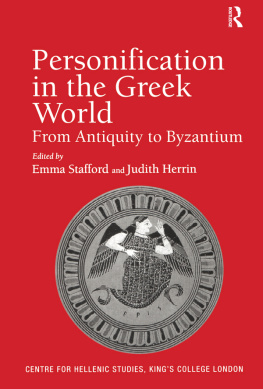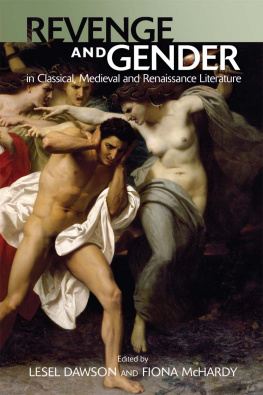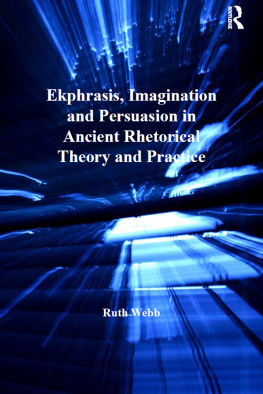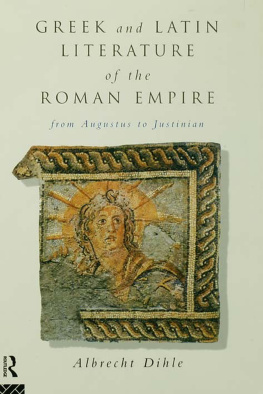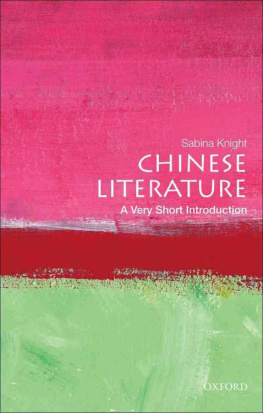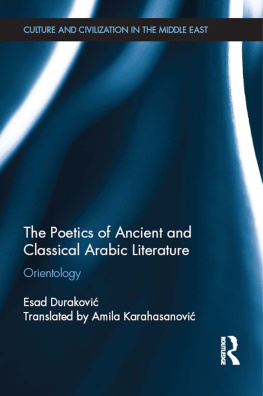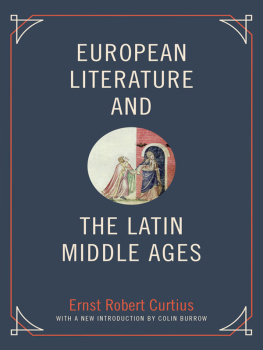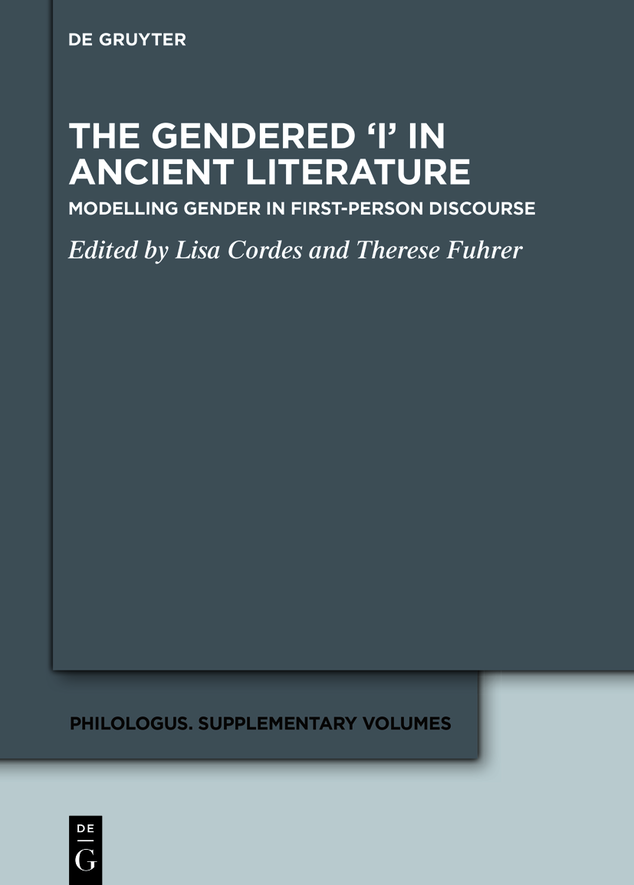Philologus. Supplemente / Supplementary Volumes
Zeitschrift fr antike Literatur und ihre Rezeption / A Journal for Ancient Literature and its Reception
Edited by
Sabine Fllinger
Sotera Fornaro
Tobias Reinhardt
Christoph Schubert
Jan R. Stenger
Volume
ISBN 9783110795196
e-ISBN (PDF) 9783110795257
e-ISBN (EPUB) 9783110795301
Bibliographic information published by the Deutsche Nationalbibliothek
The Deutsche Nationalbibliothek lists this publication in the Deutsche Nationalbibliografie; detailed bibliographic data are available on the Internet at http://dnb.dnb.de.
2022 Walter de Gruyter GmbH, Berlin/Boston
Introduction: Gender-Specific Elements in First-Person Statements in Classical Literature
Lisa Cordes
Therese Fuhrer
In his progymnasmata, the earliest surviving treatise on ancient rhetorical school exercises, dating probably from the first century CE, the orator Aelius Theon points to the fundamentally different natures of the speech of men and women. When discussing the exercise of prosopopoeia, speech in character, he instructs his readers that different ways of speaking would be fitting by nature for a woman and for a man ( ). In addition to other aspects such as age, social status, origin, and emotional state, students of rhetoric are taught to consider the aspect of gender when assigning appropriate words to the character that they are introducing as a speaker.
Aelius instructions are of relevance for the present volume, as research has long established that ancient texts are informed by the formal training of their male and in the case of Sappho and Sulpicia
Based on these considerations of the widespread rhetorical training in speech in character, the present volume starts from the premise that every first-person statement that we find in the ancient texts is in some way rhetorically modelled and aesthetically shaped. The nature of the shaping depends on the role that the speaker has to play in a certain speech context, in accordance with intra-literary logic, genre conventions, etc. Moreover, it is informed by the compartmentalised notion of ancient character. As can be seen from Aelius remarks, rhetorical theory defines a number of parameters that are deemed relevant for the representation of a person and need to be displayed in their manner of speaking. As Koen De Temmerman points out with a view to the ancient rhetorical training and the literary practice influenced by it, in antiquity, the complex notion of what constitutes a human being is broken down into a series of discrete pockets of information about a person that can be discussed and analysed separately.
The contributions in this volume analyse the use and modelling of such gender-specific elements in first-person speech. Focusing on different types of text, in Greek and Latin, poetry and prose, from the Archaic Age to Late Antiquity, they ask: What gender-specific elements are attributed to the speaker? How is the gender parameter used in statements about a specific subject, about other characters and their speeches and actions, and about the speakers emotions and those of others? How are gender-specific elements combined when the empirical author is male but the voice shaped by him is to be considered as female? With what further parameters is the role of the first-person speaker endowed? How do these parameters relate to the parameter of gender, and what function does gender have in the overall composition of a first-person discourse? Finally, how are gender roles or gender-specific role models also role stereotypes staged and discussed in first-person speech, and how do the texts work with role expectations concerning gender that are given by frame, context, and setting?
By concentrating on first-person speech, we ask specifically how the gender parameter is moulded in the process of talking about oneself, and what possibilities arise from the subjectivisation of perspective. Prime examples of such subjectivisation are the specifically Roman form of subjective love elegy, and the undelivered speeches of indignant women in Ovids Heroides. In the latter, poetological reflections and subjective experiences in the realm of erotics, as well as other gender-specific experiences regarding social status, (loss of) prestige, (loss of) authority, and emotionality, are expressed in the first-person statements and played through in changing combinations. In the process, the I can explore boundaries and test risks, without the statements formulated from the speakers perspective claiming objective validity. The ancient authors are familiar with these possibilities regarding the literary staging of subjective experience and experiment with them continuously.
The volume analyses the use and modelling of the gender parameter in different types of first-person speech, be it that the speaker is (represented as) the author of a work, be it that they feature as characters in the work, narrating their own story or that of others, from a homo- or a heterodiegetic position. With that, the volume does not only promise new insights into the rhetorical strategies and literary techniques used to construct a gendered I in ancient literature,
By bringing together studies that analyse first-person speech in a wide range of texts while focusing on one single parameter, the volume offers perspectives on aspects such as the modelling of a gendered I, or the depicted relation between the inner-literary speakers and the author that can be compared and related to each other. Since the individual papers are summarised at the beginning of each chapter, in the following we point to some recurring aspects and overlaps between them, which invite complementary readings.
Most contributions examine first-person speech uttered by an individual human being. Judith Hallett adds a perspective by concentrating on individual human speakers who refer to themselves using a third-person singular verb form. Emily Hauser, Therese Fuhrer, and Valentina Moro examine gender-specific elements in collective speech. There are several chapters about non-human speakers, as well. The contributions of Luca Basso, Federica Bessone, Markus Hafner, Alison Sharrock, Henriette Harich-Schwarzbauer, and Ann-Kathrin Sthle concentrate on divine speakers or on speakers that are depicted as being connected to the superhuman. Helge Baumann and Alison Sharrock examine animal speakers and human speakers who are transformed into animals. Florence Klein shows that a speaking object, the lock of Berenice, can be subject to a gendered literary modelling. The (non-)human or divine status of the speakers does not necessarily influence the way the parameter gender is employed Luca Basso and Helge Baumann demonstrate that a divine and an animal I may be gendered in an anthropocentric way, according to contemporary discursive norms and role patterns. Yet, as Alison Sharrock shows, by looking at first-person narrative of metamorphosis in Ovids Metamorphoses, a speakers gender can influence the process of their involuntary transformation.
As the papers show, the speaking I is often designed as clearly male or female, but it can have an ambiguous gender status, as well. This ambiguity is created when the speakers cross gender boundaries in their behaviour or self-presentation. A female speaker may take on a stereotypically male role (Cordes, Sthle), while a male speaker may explicitly appropriate behaviour with female connotations (Mayr). In other cases, the speakers appear as hybrids in which different voices, e.g., of male god and female priestess (Hafner), of muse and (male) bard (Hauser), or of male declaimer and female litigant (Cordes), merge. In cases where the speaking I appears as a hybrid, and in texts with female auctorial speakers, the discussion of the speakers gender is linked to questions of authorship and agency. This is shown by Markus Hafner with regard to the Delphian Pythia, and by Jacqueline Fabre-Serris regarding the poet Sulpicia. In both cases, the gender of the speaking I has influenced the discussions about authorship from antiquity well into modern times. As is shown by Florence Klein with regard to Catullus translation of Sapphos fr. 31, and by Emily Hauser with regard to Pindars depiction of the Graces in


